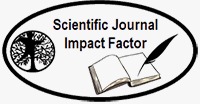Doryctinae (Hymenoptera: Braconidae) from Caetetus Ecological Station, a seasonal semideciduous forest in Gália, São Paulo, Brazil
Resumo
Brazil is one of the most biodiverse country in the world. However, the fauna of insects is poorly known, especially parasitic wasps. In the present work we provide information on the diversity of Doryctinae (Hymenoptera: Braconidae), one of the most diverse subfamilies of Braconidae. The survey was conduct in a semidecidual seasonal forest located in the State of São Paulo (Caetetus Ecological Station) using three methods: Malaise trap, Yellow pan-trap, and Sweep net. 788 specimens were caught, distributed in 18 genera, of which Heterospilus was by far the most abundantly collected with 85,15% of total sampling. The methods that obtained more individuals captured were, repectively, Sweep net (36.92% of sampling), Malaise trap (34.77%) and Yellow pan-trap (28.29%). The Caetetus Ecological Station is an important protected area that houses a considerable richness of genera of Doryctinae.Downloads
Publicado
2017-04-21
Como Citar
Nunes, J. F., Castro, C. S., & Ruiz, S. S. (2017). Doryctinae (Hymenoptera: Braconidae) from Caetetus Ecological Station, a seasonal semideciduous forest in Gália, São Paulo, Brazil. Ciência ET Praxis, 7(13), 27–30. Recuperado de https://revista.uemg.br/index.php/praxys/article/view/2135
Edição
Seção
ARTIGOS - CIÊNCIAS BIOLÓGICAS
Licença
Esta obra está licenciada sob uma Licença Creative Commons.






